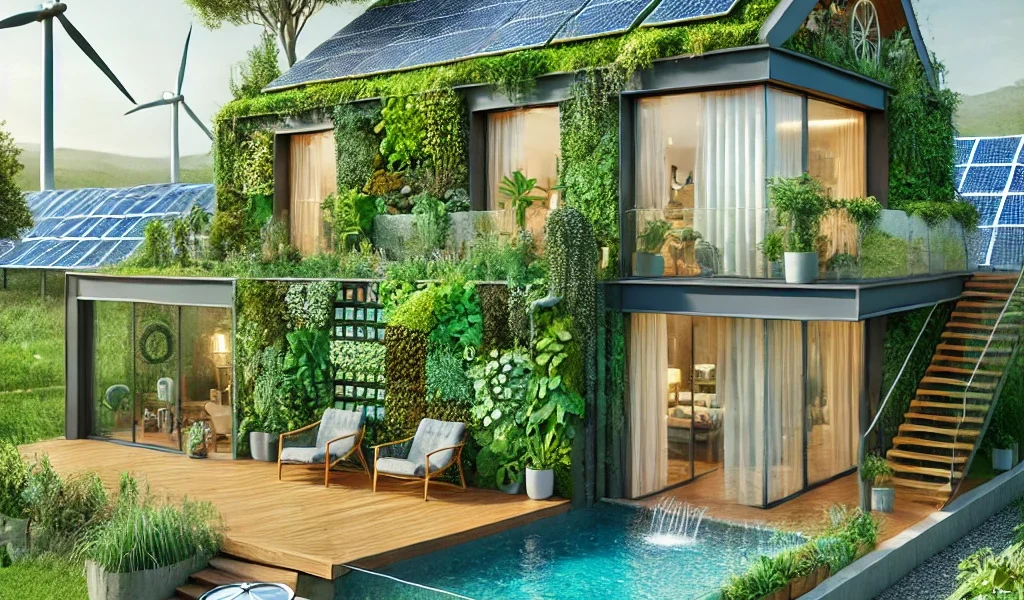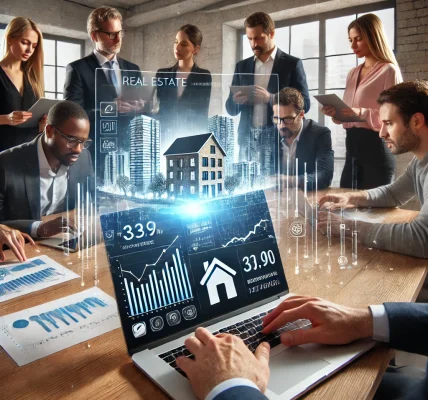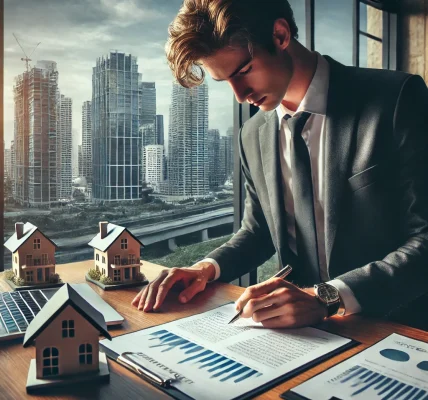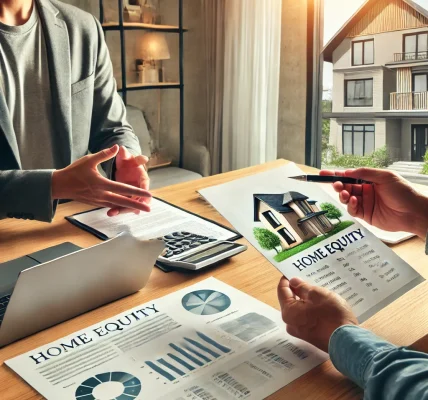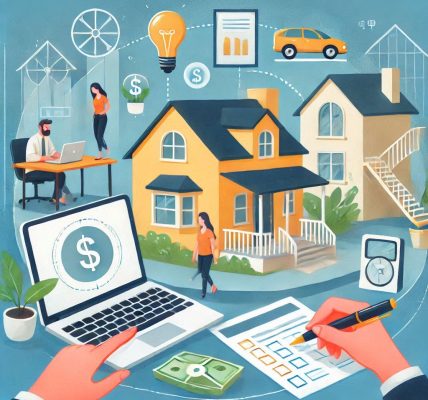Introduction
As the world moves towards sustainability, the real estate sector is also experiencing a green transformation. Green real estate, also known as sustainable or eco-friendly real estate, is shaping the future of property investment by focusing on energy efficiency, reduced environmental impact, and enhanced living conditions.
Whether you’re an investor, homeowner, or developer, understanding the importance of green real estate can help you make informed decisions that align with market trends and long-term financial benefits.
In this guide, we will explore the rise of sustainable properties, their impact on the market, benefits for investors, and key strategies to adopt green real estate practices.
1. What is Green Real Estate?
Green real estate refers to properties that are designed, built, or retrofitted with sustainability in mind. These properties use eco-friendly materials, energy-efficient systems, and environmentally responsible construction techniques to minimize their carbon footprint.
Key Features of Green Real Estate:
- Energy Efficiency: Use of solar panels, LED lighting, energy-efficient appliances, and smart home technologies.
- Sustainable Building Materials: Recycled wood, bamboo flooring, and non-toxic paints.
- Water Conservation: Rainwater harvesting, low-flow plumbing fixtures, and drought-resistant landscaping.
- Improved Indoor Air Quality: Proper ventilation, air purification systems, and use of non-toxic materials.
- Smart Technology Integration: Smart thermostats, automated lighting, and AI-powered energy management.
2. Why Green Real Estate is Growing in Popularity
Consumer Demand for Sustainable Living
- Buyers and renters are becoming more eco-conscious and prefer homes with energy-efficient features.
- Millennials and Gen Z prioritize sustainability when making real estate decisions.
Government Regulations and Incentives
- Many governments are offering tax credits, rebates, and incentives for green building initiatives.
- Stricter environmental regulations are pushing developers to adopt sustainable practices.
Long-Term Cost Savings
- Energy-efficient homes reduce utility costs.
- Green buildings have lower maintenance and operational costs.
Increased Property Value
- Sustainable homes often have higher resale values.
- LEED-certified and energy-efficient buildings attract premium pricing.
Corporate and Institutional Support
- Large corporations are investing in green office spaces.
- Real estate investment trusts (REITs) focusing on green properties are gaining traction.
3. The Impact of Sustainable Properties on the Market
Residential Real Estate
- Green homes attract buyers willing to pay more for energy savings and environmental benefits.
- Smart homes with eco-friendly technology are becoming the new standard.
Commercial Real Estate
- Businesses prefer leasing green office spaces to align with ESG (Environmental, Social, Governance) goals.
- Energy-efficient buildings lower operational costs for businesses.
Rental Market
- Renters are willing to pay higher rents for sustainable apartments with smart features.
- Eco-friendly co-living spaces are rising in demand.
New Developments & Urban Planning
- Cities are adopting green building codes.
- Developers are incorporating green roofs, solar panels, and energy-efficient HVAC systems.
4. Benefits of Investing in Green Real Estate
1. Higher ROI & Property Appreciation
- Sustainable homes and buildings often sell at premium prices.
- Green real estate investments attract high-quality tenants and buyers.
2. Lower Operating Costs
- Energy-efficient properties significantly reduce electricity, water, and maintenance costs.
- Smart home technology optimizes energy usage, cutting down monthly expenses.
3. Strong Market Demand & Resilience
- Climate-conscious buyers prefer green-certified properties.
- Government regulations are favoring sustainable developments.
4. Tax Benefits & Incentives
- Many governments offer tax deductions, credits, and grants for energy-efficient home improvements.
- Solar panel installations can qualify for federal and state incentives.
5. Environmental Impact & Social Responsibility
- Reduces carbon footprint and contributes to a healthier planet.
- Creates healthier living environments with improved indoor air quality.
5. How to Get Started with Green Real Estate Investing
Step 1: Choose the Right Type of Green Investment
- Buy existing energy-efficient properties.
- Invest in new sustainable developments.
- Retrofit traditional homes with green upgrades.
- Invest in REITs specializing in sustainable real estate.
Step 2: Conduct a Sustainability Audit
- Assess energy efficiency, insulation, and heating/cooling systems.
- Identify areas for green upgrades such as solar panels and smart home automation.
Step 3: Obtain Green Certifications
- LEED (Leadership in Energy and Environmental Design): Recognized globally for sustainable buildings.
- ENERGY STAR: Certifies energy-efficient appliances and home systems.
- WELL Building Standard: Focuses on occupant health and well-being.
- BREEAM (Building Research Establishment Environmental Assessment Method): Common in the UK and Europe.
Step 4: Leverage Government Incentives & Financing Options
- Research federal and state-level tax credits for solar and energy-efficient upgrades.
- Consider green mortgages, which offer favorable terms for energy-efficient homes.
- Explore grants for sustainable housing projects.
Step 5: Work with Eco-Conscious Developers & Contractors
- Choose builders experienced in sustainable construction.
- Use eco-friendly materials and energy-efficient designs.
6. Overcoming Challenges in Green Real Estate
High Initial Investment Costs
- While green upgrades may be expensive upfront, they provide long-term savings and increased property value.
- Government rebates and financing options can offset costs.
Market Awareness & Education
- Not all buyers and tenants are fully aware of the benefits of green homes.
- Effective marketing and education campaigns can highlight energy savings and health benefits.
Availability of Green Building Materials
- Sustainable materials may be costlier and harder to source.
- Partnering with suppliers specializing in eco-friendly products can help.
7. The Future of Green Real Estate
Smart Homes & AI-Powered Efficiency
- The integration of AI and IoT (Internet of Things) will make green homes smarter and more efficient.
Net-Zero & Carbon-Neutral Buildings
- The future of real estate will focus on net-zero buildings that produce as much energy as they consume.
Increased Government Mandates
- More countries will enforce stricter environmental regulations for new and existing properties.
Sustainable Urban Development
- Green cities and eco-friendly communities will become more common, emphasizing renewable energy and sustainable transportation.
Conclusion
Green real estate is not just a trend; it’s the future of the property market. As sustainability becomes a priority, investors, developers, and homeowners must adapt to eco-friendly solutions. Investing in green real estate offers financial rewards, long-term resilience, and environmental benefits.
By making informed choices and leveraging government incentives, you can participate in this growing sector while contributing to a more sustainable world. Whether you’re buying, selling, or investing, going green in real estate is a decision that benefits both your wallet and the planet.
